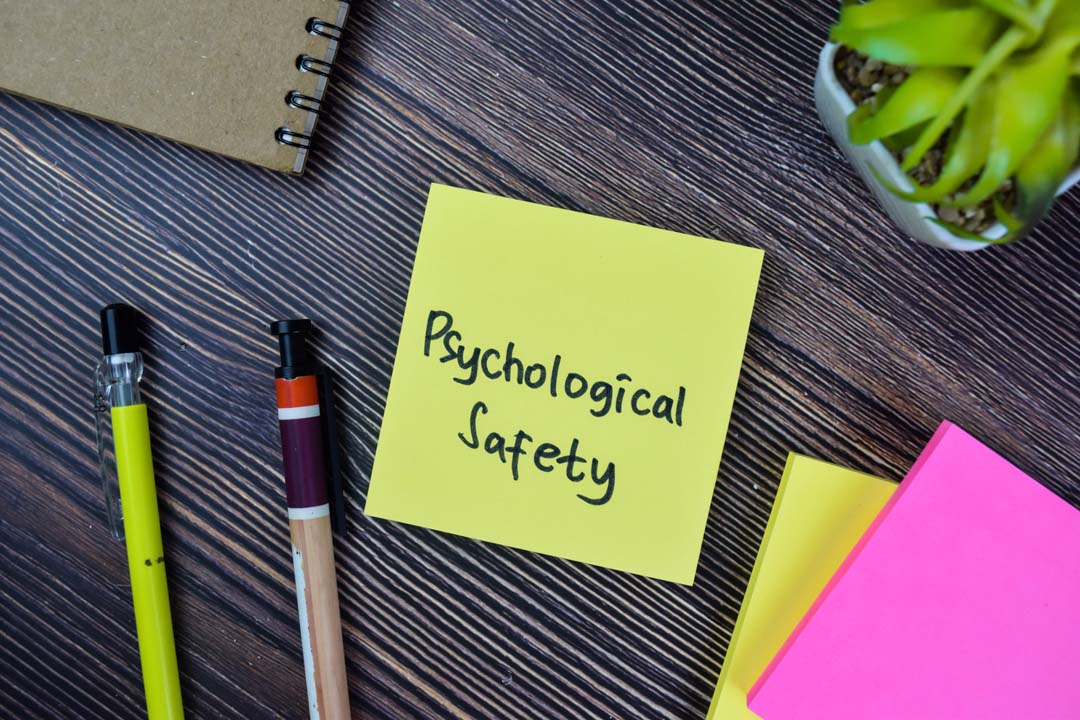Fear, silence, and missed opportunities: Sophie Seex looks at the barriers to psychological safety in the workplace
It makes headlines when organisation’s catastrophically fail: The Boeing disaster, the demise of Nokia, sexual harassment in the CBI, and the Jimmy Savile scandal all have their roots in the fear of speaking out, or people not being taken seriously when they do. To some extent, whistleblowing policies aim to address this issue, but they are not always enough to tackle employees’ fear of retribution – organisations also need to foster an environment of psychological safety.
Teams that embraced mistakes, and learned from them, were more likely to perform well
Psychological safety stems from a shared belief held by members of a team that it is safe to speak up without getting into trouble. It may sound simple, yet surprisingly few organisations actually foster a culture of psychological safety.
A long road to safety
According to McKinsey, only 26% of leaders create psychological safety for their teams, suggesting there is still a long way to go before leaders are equipped with the necessary skills to bring out the best in their people.
Probably the most quoted research on psychological safety in the workplace is by Professor Amy Edmondson, author of the book ‘The Fearless Organisation’. Initially, Professor Edmondson undertook a PhD to discover which healthcare teams reported the highest success, her hypothesis being that better performing teams would make fewer mistakes. What she actually found was the opposite. Teams that embraced mistakes, and learned from them, were more likely to perform well – and those that did so had higher levels of psychological safety.
Further research into psychological safety has shown that it is linked to motivation, engagement, retention, personal well-being, and continuous learning and development. Leaders would do well to heed the growing evidence around psychological safety and develop strategies that encourage better communication.
What prevents psychological safety?
The most limiting factor to psychological safety is fear. Humans are hard-wired for self-preservation and safety. When the possible consequence of speaking out is to look stupid in front of peers, be viewed as a negative person, or risk personal retribution, then self-preservation will overrule organisational interest. As a result, fear shuts down higher-order thinking and creativity, and productivity is reduced.
Leaders therefore need to break down fear, and its associated defensive behaviours, if they are to tap into the best intellect and creativity within their organisation.
How do you know when psychological safety is present?
A psychologically safe environment is tangible. It can be felt when it’s there, and also when it isn’t. From an L&D and coaching perspective, teams that display psychological safety are more likely to feel comfortable discussing both the positives and negatives within an organisation. They will share ideas, openly discuss what does and doesn’t work, and have a positive attitude towards learning and self-development.
People may not always feel comfortable in an environment of psychological safety. After all, they risk accountability and feedback, which won’t always be positive. It is important that a team understands that being stretched, taking some risks, and being accountable are all important, help to raise standards, and provides continued self-development.
Creating the right environment
Psychological safety is not about saying whatever you like whenever you like, neither is it about being overly nice and protecting each other. If everyone always agrees, then something else may be at play other than psychological safety.
It’s important to set norms, so that individuals and teams feel able to contribute their views, ideas and concerns. Organisations can facilitate this through training and coaching, so that leaders can provide a safe space to have productive conversations, share ideas and level the hierarchy between managers and their team members.
Training in Emotional Intelligence (EI) can have a profound effect on levels of psychological safety. Leaders that demonstrate high levels of EI are highly sought after and are more likely to create an environment of shared success, rather than self-interest.
L&D and coaching professionals can provide the tools to develop EI in leadership and, as a result, build the leadership behaviours that are conducive to psychological safety:
- Awareness of others
EI presents itself as an awareness of others. Emotionally intelligent leaders are curious about their people – their aspirations, their motivations, their outside interests. They also display attentive behaviour by asking questions, allowing time for people to talk, and encouraging people to reveal their genuine thoughts and feelings, to be vulnerable without recrimination. - Self-awareness
An emotionally intelligent leader will have an awareness of how their behaviour affects others. How they react to criticism, pessimism, differing personalities, and cultures, can be the difference between bringing out the best in someone, or causing them to psychologically retreat. - Leading by example
A leader that is prepared to show their own vulnerability and accept they do not always have the answers will lead by example and make it easier for others to follow suit. Continuing professional development continues at all levels in an organisation: if a leader embraces learning D and coaching as an opportunity to develop and grow, and shares that, then others will too.
From safety to success
L&D and coaching professionals can play an important role in the development of psychological safety in organisations, providing a safe space in which to practice freedom of opinion and the sharing of ideas. It can also help the team to develop a call-to-action and provide a springboard from which opinions and ideas can be utilised in a productive way.
By providing the training and tools for leaders to continue their journey of psychological safety, it will help further their career, the careers of others and maintain high safety standards in mission-critical environments.
There will naturally be setbacks in the workplace, but having a team prepared to learn from them will lead to a more resilient and inclusive team over the longer-term.
Sophie Seex is Managing Consultant at Talogy




